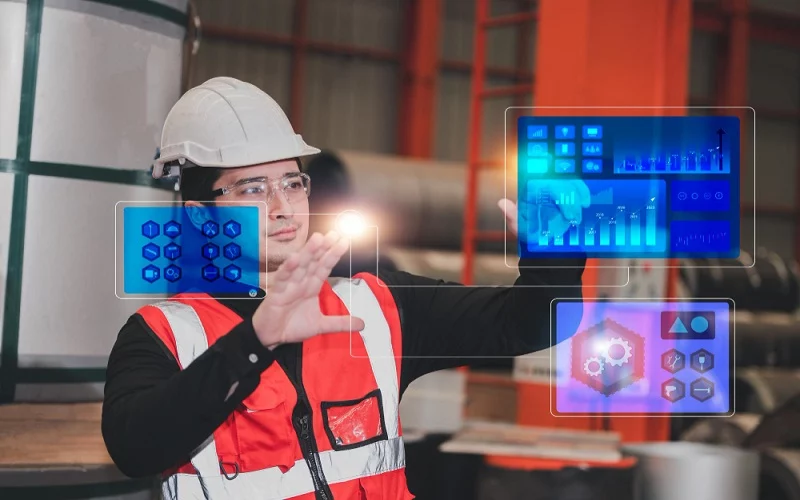Hyperautomation collates several elements of process automation, integrating tools and technologies that intensify the capability to automate daily and repetitive tasks.
Hyperautomation was on the top of Gartner’s Top 10 Strategic Technology Trends List for 2020.
This is the second blog in our Hyperautomation series which focuses on – How to Hyperautomate and Hyperautomation in taxation. In our first blog, we covered the challenges faced by the industry in current business processes; what is Hyperautomation, and the need for the same.
How To Hyperautomate?
The procedure to hyperautomate is very similar to automation. However, the level of automation achieved, and subsequently, the results derived differ significantly. To hyperautomate, one has to conduct an understanding of all business processes which could be related to procurements, finance, tax, sales, marketing, legal, HR, manufacturing, etc. Each function has to be broken down into the smallest possible fragments of processes for deeper understanding. Post that, analysis of each function is required to check which of such processes can be automated and to what extent. Thus, a walkthrough of business processes is required to be done as a first step. Basis such walkthrough either the organisation can identify themselves all activities or tasks that can be automated or seek expert help.
In other words, the following are the broad steps of Hyperautomation:
- Conduct walkthroughs: Conduct business process walkthroughs and identify all tasks or activities that can be automated.
- Set a vision: An organisation needs to have a digital vision. Before beginning the journey of Hyperautomation, one must be wary of the required result. Business Process owners must be clear about the desired outcome and the goals should be set accordingly.
- Process optimisation: The current processes should be optimised at the initial stage to avoid any duplication later on. Hyperautomation should only take place once all processes are optimised and inefficiencies if any are removed from such processes.
- Determine the right mix: As Hyperautomation is a mix of technologies, it is important to select the right technologies. Some important factors while selecting technologies could be how compatible the technologies are amongst themselves. The interoperability of technologies is imperative to be checked. If a new technology is being used, it is always a good idea to verify if such technology is scalable, can be used across platforms, by people from different domains, etc. This selection of the right tool and technology is referred to as the architect for Hyperautomation.
- Implement: The final stage is the implementation of the right mix of technologies across various business processes which enable unified end-to-end automation for all business processes.
According to Gartner, “Hyperautomation is an unavoidable market state in which organizations must rapidly identify and automate all possible business processes.”
Role In Taxation With Different Technologies
Data Restructuring
Data has the authority to empower automation and produce new tax insights. But the question here is how will the tax departments use data management to boost the final processes and outcomes? The cluster of data managed by organizations requires automation to prevent maze-like scenarios leading to complexity in data storage in the legacy systems. The large amount of information generated through digital transactions leads to a cluster of raw data that needs to be managed to ensure compliance, prevent risks of scrutiny, and audits in the indirect taxation domain. Here’s where automation plays a key role. These processes will no longer require manual intervention if businesses use technologies like RPA, Hyperautomation, and smartly integrate the relevant information backward into their legacy systems.
Role Of Digital Twin
Thomas Kaiser, SAP Senior Vice President of IoT, said: “Digital twins are becoming a business imperative, covering the entire lifecycle of an asset or process and forming the foundation for connected products and services. Companies that fail to respond will be left behind.”
To deploy RPA in several business processes such as Record to Report, Procure to Pay, Order to Cash, Machine to Machine and many more creates instances to explore decision modeling on AI-based inputs, stream analytics, and machine learning tools. Thus, making it necessary to automate these business processes which were previously un-automatable. Hyperautomation creates a layer across the organization thereby creating a Digital Twin of the Organization (DTO) that makes it possible to visualize the wear and tear in various processes that need to be automated. This can also help ensure limiting penalties while auditing. Digital twin technology benefits companies to advance the customer experience by addressing the customer needs in a better way, developing improvements to the current products, operations, and services, and assisting in driving the modernization of new business.
Transformation Via Building Blocks
Each block or a combination of any of the below components leads to hyperautomation.
The raw data which is the food resides in the Conventional Applications. This set of data needs to be massaged, analyzed, and shared further with the destination applications via Connector/s. This is where digital transformation comes into the picture. Digital transformation is only possible with equipped tools and smart automation using Robotic Process Automation, Artificial Intelligence & Machine Learning Tools. This entire cycle is a closed-loop defined as Hyperautomation, which can build a strong legacy system for your taxation needs.
Automation in Compliance Tracking & Reporting
The digitization era began a few years back; however, till very recently, not a lot of transformation was seen. In the last couple of years, the wave of technology coupled with e-governance has provided the necessary boost to tech-based compliances. In 2021, with the changing government ecosystems across various domains, organizations must stay abreast as far as their technology is concerned. An automated system in place to keep track of your compliance & reporting is the need of the hour. A digital system for managing your taxes and collecting data helps reduce errors and ensures proper data management of the taxes paid, sales and purchases, and boosts accuracy for faster and more reliable reporting.
Taxation Twist
The taxation function is one of the lacklustre departments which was traditionally done manually. Till very recently, a misconception prevailed that taxation can never be automated. However, when GST was rolled out in India, the myth was finally broken. In the last three years, organisations – big or small have used technology extensively to carry out compliances, reconciliations, payments, audits, and other tax-related activities. To the industry’s surprise, not only the activities were smoothly carried out, they were error-less, left an audit trail behind, and timely completed. Thus, the industry has witnessed the role of technology in the taxation domain closely.
Hyperautomation In Taxation
The tax teams across organisations are always constrained by time and resources. The need to stay compliant takes up a lot of time and effort. In a survey conducted on Reporting in a digital world, it was reported that tax teams spend almost half of their time creating and updating reports. The tax authorities are quickly adopting technology and embracing digitalisation to interpret taxpayer trends, extract meaningful data from the entire range of data, and analyse the same to predict future tax collections. Moreover, technology is being used to identify suspicious transactions and businesses that may be evading tax. Furthermore, real-time reporting such as E-way bills, E-invoicing, etc. is another example of Governmental agencies switching to technology. This has become one of the most vital reasons why organisations are looking at digitising their tax functions.
The need to be two steps ahead of the authorities with the added advantage of spending lesser time in reporting and complying is paving the way for technology in taxation.
Hyperautomation can be a superhero in taxation function as it would perform data collation, adjustments, reconciliations, sorting, processing, e-filing, computations, etc. For larger organisations who are registered in different jurisdictions and have various tax registrations, Hyperautomation could sort the data, process it as per the jurisdiction, and file e-returns in respective jurisdictions without any human intervention. An audit trail would also be left behind for the future to track all adjustments done, data furnished to authorities, return confirmations received, payment challans, etc. Apart from tax filings and returns, Hyperautomation can also take simple decisions by way of identifying patterns. Further, it can help in filing refund claims, get the audit data ready and reconciled, analyse taxation trends to identify if any variation is seen. Hyperautomation would also improve the quality of data and would result in minimum rework when submitting data to tax authorities or for the purpose of audits.
Closing Note
The rapidly changing global tax environment is creating unprecedented opportunities as far as digitisation is concerned. However, it’s not machine vs man, but a partnership between machines and man to create a greater impact and to make digitisation successful in spirit. A structured digitisation approach in the form of Hyperautomation could take the organisation places!
In our next blog, the last in the series, we shall discuss the role of Hyperautomation: In Different Business Functions And Its Future.








